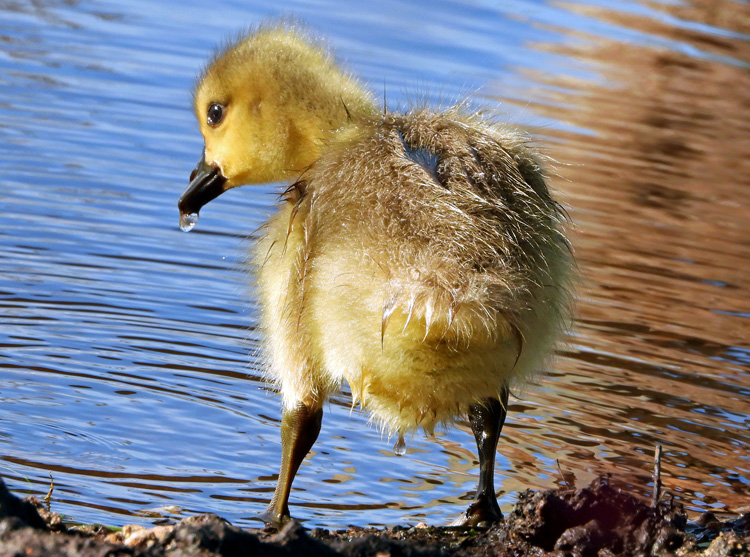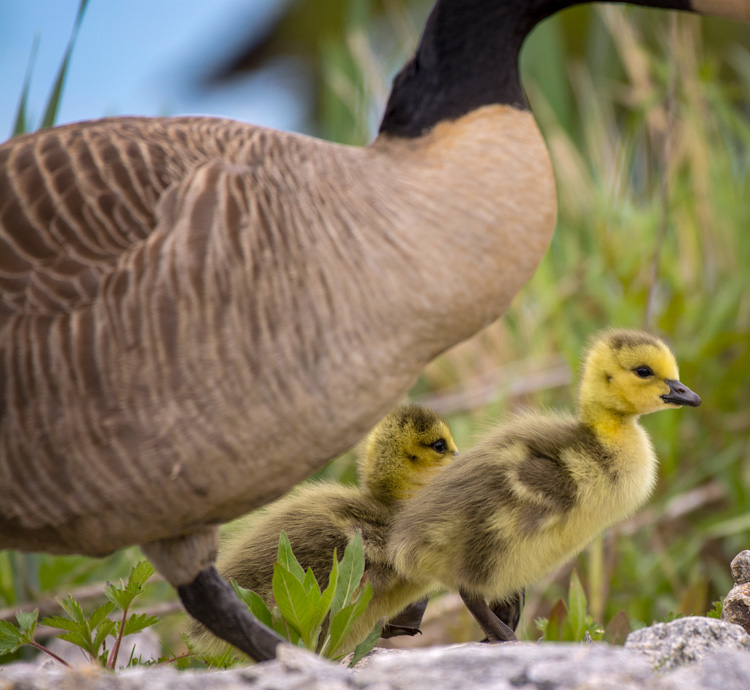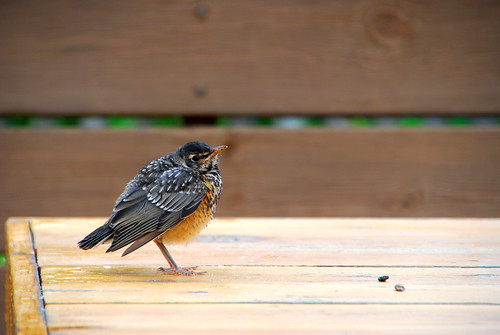It’s springtime, which means the parade of cute, fluffy baby animals is about to really take off! This week, we’ve got five adorable photos of Canada Goose babies, or goslings as they’re properly called.
The Canada Goose (not Canadian Goose!) is the only species of goose that breeds in Massachusetts, although a few others may be spotted passing through outside the breeding season. They don’t typically migrate, either, instead moving to areas where the water isn’t frozen as the temperatures drop in winter.
The female Canada Goose selects the nest site, usually a slightly elevated spot near the water. The nest is a shallow depression made with plant material and lined with down. She lays a total of 4–7 eggs—only one per day—and does not begin to incubate full-time until the clutch is complete.
The male stands guard and may show aggression if the nest is threatened, so be sure to maintain a respectful distance. The goslings hatch after 25–28 days and are born precocial, meaning that they are able to walk, swim, and feed themselves almost immediately after hatching. The young stay with their parents through the first year of life.
Enjoy these five photos of fuzzy little yellow goslings from our annual Picture This: Your Great Outdoors photo contest and remember: geese are perfectly adapted to winters in New England on their own, so please don’t feed the geese!
Let us know in the comments if you’ve spotted any goslings in your neighborhood this spring!








